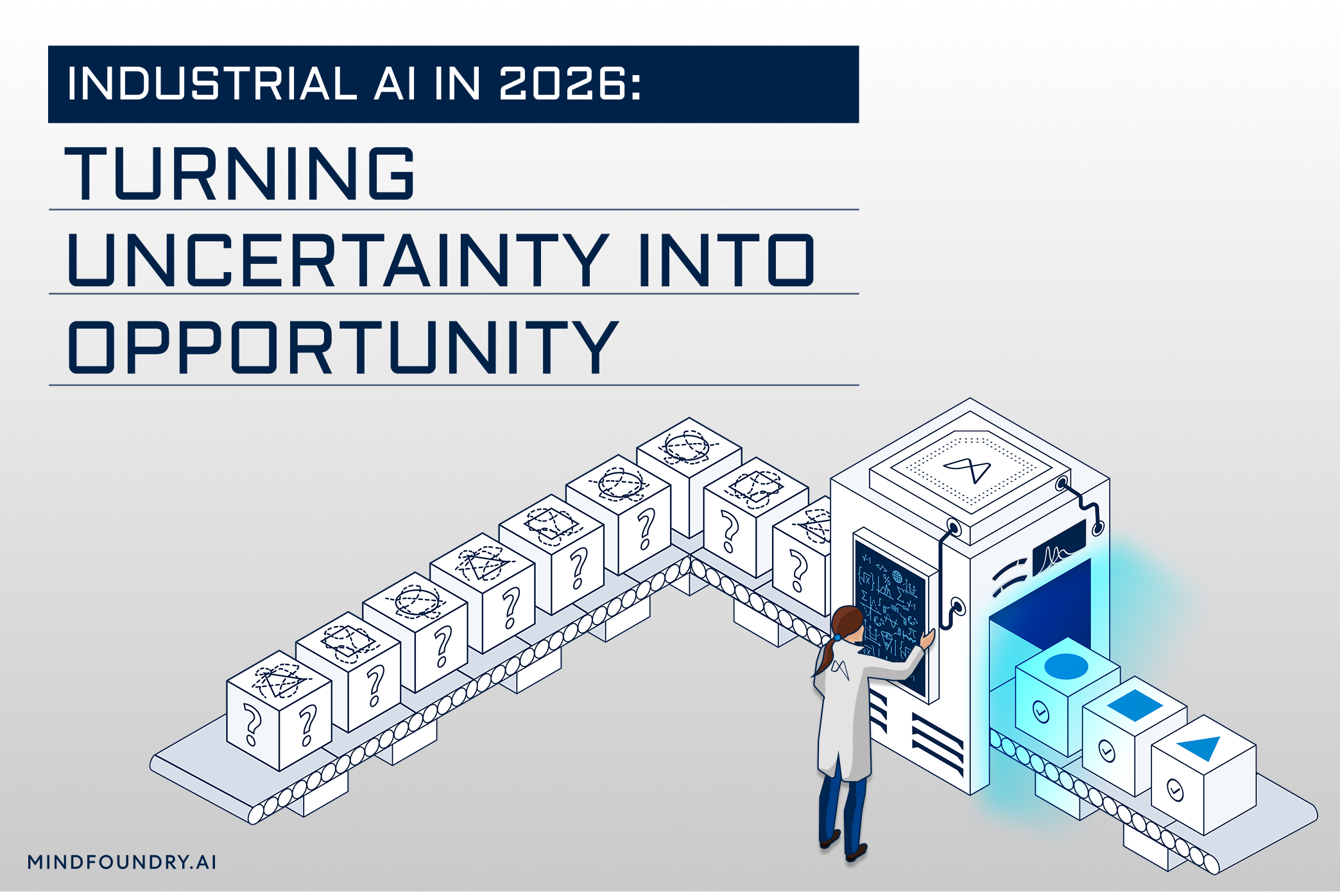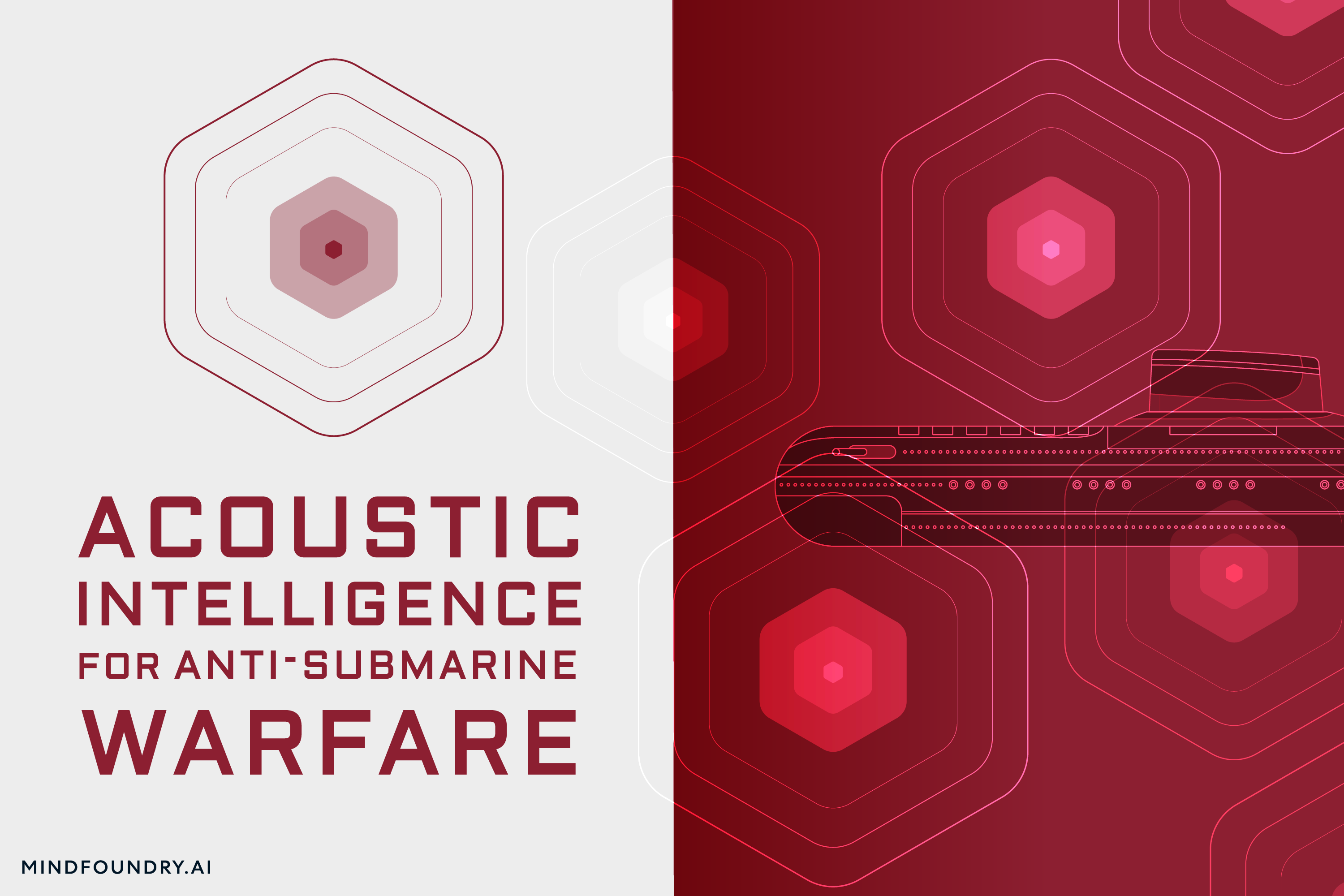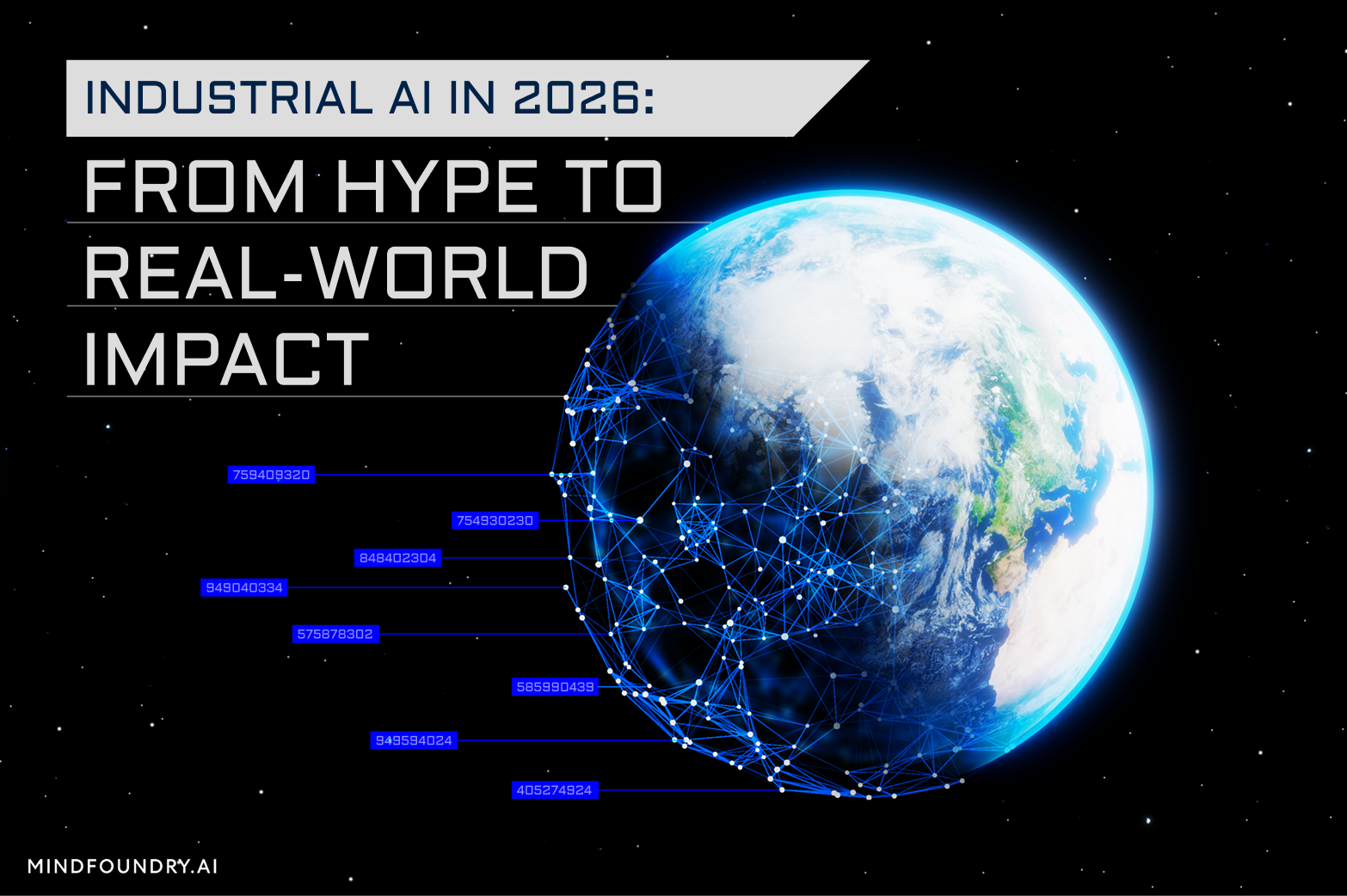AI-enabled Acoustic Intelligence for Anti-Submarine Warfare
From detecting hidden threats to defending critical underwater infrastructure, Anti-Submarine Warfare (ASW) is a cornerstone of national security. AI...
4 min read
Mind Foundry
:
Jul 31, 2025 11:03:46 AM

The substation fire at Heathrow incurred costs of over £40 million. The Iberian Peninsula blackout resulted in €1.6 billion of lost economic output. Both incidents lay bare the vulnerabilities of large, complex industrial operations. Amidst rising instability, brittle supply chains, and the impact of accelerating climate change, many industries remain unprepared. Organisations that act now to capitalise on the AI opportunity in industry stand to gain a decisive edge.
Data-rich industries like insurance and finance naturally lend themselves to AI. The digitally native operations, the structured format of data, and the fungibility of processes mean that building and testing new tools can often be more straightforward. This natural fit continues to drive rapid growth, with the Insurtech market projected to reach revenues of $239.2 billion by 2033 at a CAGR of 27%.
On the other hand, industries like defence, infrastructure, manufacturing, energy, and logistics face significant challenges in AI adoption. Unlike digital-first sectors, these domains operate predominantly in the physical world, where progress traditionally relied less on software and data, and more on people, machinery, and complex systems. Their operational complexity and fragmented data environments make AI harder to implement. While sectors like manufacturing lead industrial adoption of AI in the US, meaningful adoption rates are still less than 10%, highlighting a significant opportunity for growth.
These rare success stories are what we refer to as Industrial AI; the application of artificial intelligence on sensor, machine, and physical asset data to optimise and support real-world operations in industries which are generally not digital-first. The barrier to entry for AI adoption in these industries remains stubbornly high, requiring integration with messy legacy systems and workflows, as well as effort to unify disparate, fragmented data sources. Though the challenges are real, the opportunity to boost resilience, target decisions, and find efficiency headroom is both large and increasingly pressing.
In recent years, a series of destabilising events has reshaped the geopolitical and industrial landscape. 2020 saw the COVID pandemic bring the world to a standstill, followed by Russia's invasion of Ukraine in 2022 and then the outbreak of further conflict in the Middle East. There has also been a swathe of seismic political shifts in Europe as incumbent governments in the UK, Italy, Germany, and more were ousted.
Across the Atlantic, Donald Trump's re-election and his economic policies have caused ripple effects worldwide. This all occurs against the backdrop of numerous climate emergencies as global temperatures continue to rise. Wherever you look, the world is changing dramatically and at an increasing rate.
Volatility exposes a level of fragility in many industries; the COVID pandemic tested supply chains to the breaking point. Similarly, the Ukraine-Russia war drove up oil prices, contributing to a global inflationary crisis and a sharp increase in the cost of living. Closer to home in the UK, a series of substation fires recently caused widespread disruption at Heathrow and in London, while unpredictability in power supplies in Spain caused a blackout in April, which has been attributed to at least eight deaths on top of the hefty financial toll.
Volatility lays bare fragility, but also creates openings for bold, strategic adaptation. Organisations that reassess how they operate and move with purpose can turn this uncertainty into competitive edge. Schneider Electric, for example, has partnered with NVIDIA to deploy AI-driven digital twin technology to better monitor and forecast energy consumption across its distributed facilities. This enables more intelligent balancing of grid demand, allowing Schneider to reduce energy waste during peak usage and contribute to a more stable energy ecosystem.
Similarly, Hitachi uses cyclone forecasting from ClimateAi to anticipate disruptions and rebalance supply chains before extreme weather strikes, safeguarding continuity. Considering that studies have revealed that $1 invested in resilience and disaster preparedness saves $13 in economic impact, damage, and cleanup costs after the event, it’s clear that it pays to plan and adapt for future instability.
Against the backdrop of a growing necessity for resilience and agility, there is also a rapid commoditisation of data hygiene and processing. Principally, this is driven by increasing capability of off-the-shelf data-processing solutions using foundational text and image models, together with decreasing costs for industry-ready sensing, compute, and networking. This enables many digitally non-native industries to begin to ask deeper questions and extract information from their data. This would have been impossible even just a few years ago due to the historical cost of structuring data and integrating AI, but it is now flipping volatility from risk to opportunity.
Operational resilience is no longer a bonus for the already well-resourced; it's fast becoming the differentiator between thriving and failing, for all organisations in complex and volatile environments. AI can help identify and understand sources of risk, as well as refine and optimise operations to mitigate them.
AI-powered risk detection, quantification, and tracking are now critical capabilities, not optional additions. Firms without data-driven support will tend to overestimate risk in areas lacking visibility, which is inefficient and drives cost. Worse still, a lack of visibility can also lead to myriad unknowns, resulting in blindness and the absence of contingency planning for unseen catastrophic scenarios. Climate change transition planning is no longer merely a question of compliance and arguably superficial outputs. It has become a core element of long-term strategising. As insurers increasingly demand credible plans to mitigate environmental and systemic shocks, the ability to model, quantify, and manage these risks has become a marker of operational maturity - not just a regulatory tick-box.
Organisations that rely on complex supply chains must also accommodate this risk, as even the slightest disruption can cause far-reaching consequences. If companies can design their operations to be robust to unexpected events, they can also insulate themselves from their financial impact.
The commoditisation of data accessibility increased global volatility, and the rising imperative of resilience have laid the groundwork for a shift that goes beyond isolated tools or models. Industrial AI reflects a broader evolution where industrial strategy must adapt to a world characterised more by agility than stability.
The critical step now is for organisations to identify rigorously their most consequential risks and opportunities and deploy investment and technology where the strategic value is highest - not where the hype is loudest. While advanced models, new technology, and innovation programmes promise excitement and novelty, they are a distraction to the pursuit of real impact. Only through resolute focus and the disciplined pursuit of operational value will the winners realise the full potential of Industrial AI.
Interested in working with us? Get in touch here.

From detecting hidden threats to defending critical underwater infrastructure, Anti-Submarine Warfare (ASW) is a cornerstone of national security. AI...

The UK-USA Technology Prosperity Deal sees overseas organisations pledging £31 billion of investment into UK AI infrastructure. As AI investment...

Industrial AI is increasingly coming to the fore in physical industries, but achieving measurable real-world impact requires careful consideration...